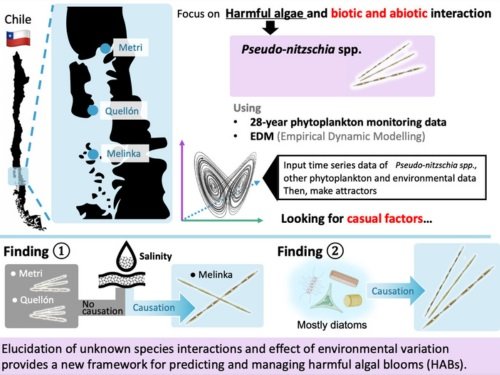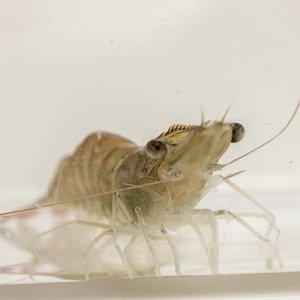
Salmon farming is a cornerstone of the global aquaculture industry. However, this vital sector faces significant challenges. Production is vulnerable to biophysical impacts such as changing sea temperatures, devastating diseases, sea lice infestations, and harmful algal blooms (HABs).
Moreover, the environmental footprint of salmon farming has led to strict regulations, particularly concerning sea lice impact and total biomass, adding an extra layer of complexity to maintaining profitability.
A recent study published by researchers from the University of Stavanger, the Norwegian Institute of Food, and San Diego State University examines how these biophysical factors and regulatory constraints—especially those related to capacity utilization—affect the profitability of salmon farming companies in Norway, the world’s largest producer.
The research, published in Aquaculture journal, focuses on “profit deviation” (the difference between a company’s gross profit and the industry average) to understand variations in performance.
Key challenges and their impacts
The global salmon farming industry faces several challenges, which can be grouped into the following categories:
Sea water temperature
Temperature is crucial, directly influencing salmon growth rates (with an optimal range between 14 and 16°C) and feed consumption. It also affects the prevalence and management of sea lice. Temperature fluctuations can influence harvesting decisions and, consequently, sales and profitability.
The study observed fluctuating temperature patterns potentially linked to profit deviations.
Diseases (ISA and PD)
Diseases, particularly Infectious Salmon Anemia (ISA) and Pancreas Disease (PD), pose significant risks, causing direct production losses due to mortality and lesions while potentially affecting market competitiveness. Disease outbreaks impact the size of harvested salmon, influencing market prices and profitability.
Stay Always Informed
Join our communities to instantly receive the most important news, reports, and analysis from the aquaculture industry.
Sea lice
Considered the most significant health issue, sea lice infestations negatively affect fish welfare and significantly increase production costs due to treatments and prevention measures.
Strict regulations limit the permissible sea lice levels per fish, driving costly management strategies such as medicinal/mechanical treatments and the use of cleaner fish.
Harmful algal blooms (HABs)
Though less frequent, severe HAB events can cause massive economic losses due to large-scale fish mortality. Climate change and potentially nutrient runoff from farms may contribute to their occurrence.
Regulations and capacity utilization
Regulations often restrict the Maximum Allowed Biomass (MAB) per license. While intended to manage environmental impact, this limits production flexibility. Capacity utilization (measured as sales volume relative to MAB) has largely stagnated since 2012, suggesting that many farms operate close to their regulatory limits.
The size factor: different impacts on small and large farms
A crucial finding of the study is that the impact of these challenges differs significantly between small salmon farming operations (defined as those with fewer than 10 licenses) and large ones (more than 10 licenses):
Diseases
While diseases negatively affect profit deviation overall (further deteriorating profits below the industry benchmark), this negative effect is significantly more pronounced for large companies than for small ones.
Capacity utilization
Higher capacity utilization leads to a positive profit deviation for large companies, meaning they become more profitable relative to the industry average when intensively using their MAB.
However, for small companies, the impact of high capacity utilization on profit deviation is minimal or even slightly negative. This suggests that small companies, which often operate with fewer facilities and less financial flexibility, may struggle more when pushing capacity limits, potentially hindering their ability to effectively manage other biophysical impacts.
Sea lice
Interestingly, despite being a major cost factor, the study’s models did not find a statistically significant difference in the impact of average sea lice levels on profit deviations between small and large companies.
According to the study, this could reflect the widespread nature of the challenge and the broad regulatory pressure, which has led to similar management efforts across companies of different sizes in recent years.
Summary of key findings
- Salmon diseases significantly worsen profit deviations from the industry average, with a stronger negative impact observed in large companies.
- Intensive capacity utilization (MAB) significantly benefits the relative profitability of large companies but not small ones.
- Average sea lice levels, according to the study’s model, did not show a differential impact on profit deviations based on company size.
Conclusion
The future growth of the salmon farming industry depends on sustainable practices that effectively manage both biophysical risks and environmental impacts. This research highlights that company size is a critical factor in addressing these challenges. While large companies can leverage economies of scale, inflexible regulations restricting production may disproportionately hinder smaller operators’ ability to adapt to crises.
In this regard, policymakers may need to consider more flexible regulatory approaches that take into account the different capacities and limitations of small and large salmon farms to foster a more resilient and sustainable industry for all stakeholders.
The study was funded by the Research Council of Norway.
Contact
Dengjun Zhang
UiS School of Business and Law, University of Stavanger
N-4036 Stavanger, Norway
Email: dengjun.zhang@uis.no
Reference (open access)
Zhang, D., Sogn-Grundvåg, G., He, L., Tveteras, R., & Xu, X. (2025). Biophysical factors, environmental regulations, and profit deviations: The case of salmon farming companies. Aquaculture, 742495. https://doi.org/10.1016/j.aquaculture.2025.742495
Editor at the digital magazine AquaHoy. He holds a degree in Aquaculture Biology from the National University of Santa (UNS) and a Master’s degree in Science and Innovation Management from the Polytechnic University of Valencia, with postgraduate diplomas in Business Innovation and Innovation Management. He possesses extensive experience in the aquaculture and fisheries sector, having led the Fisheries Innovation Unit of the National Program for Innovation in Fisheries and Aquaculture (PNIPA). He has served as a senior consultant in technology watch, an innovation project formulator and advisor, and a lecturer at UNS. He is a member of the Peruvian College of Biologists and was recognized by the World Aquaculture Society (WAS) in 2016 for his contribution to aquaculture.




